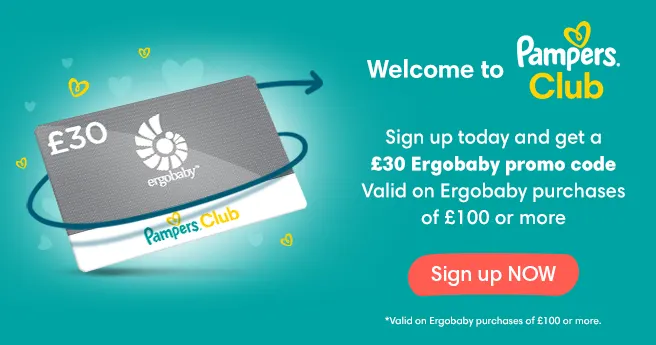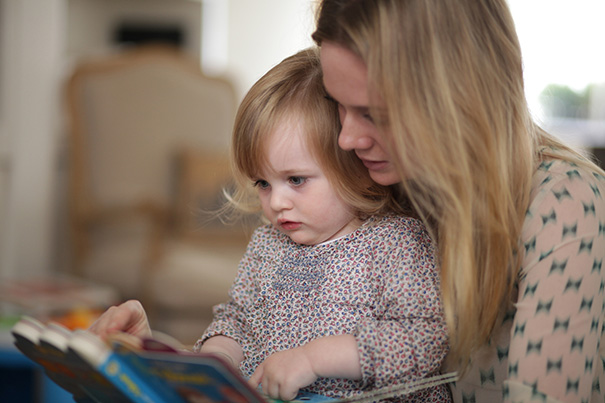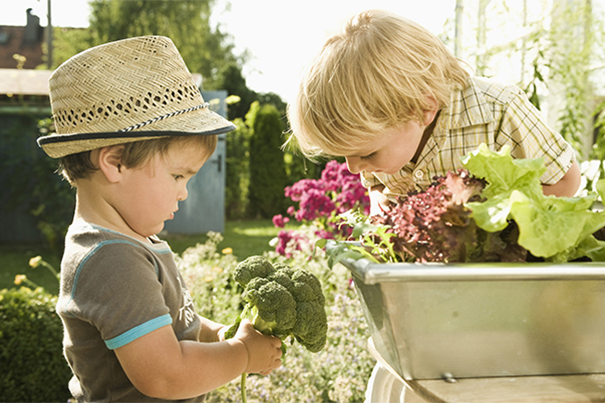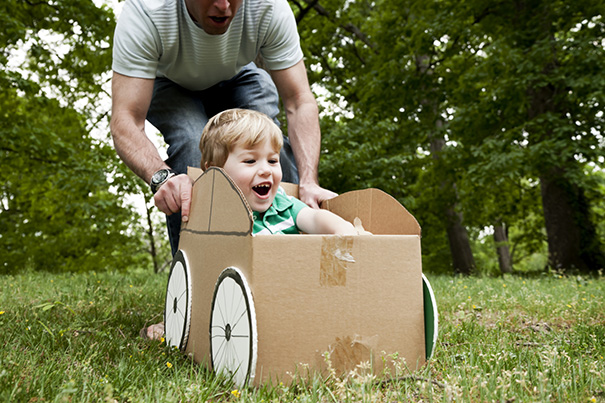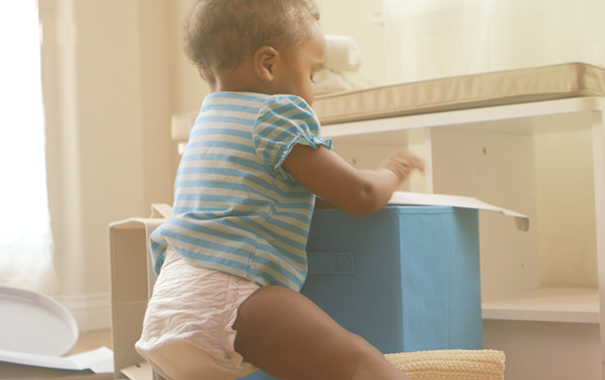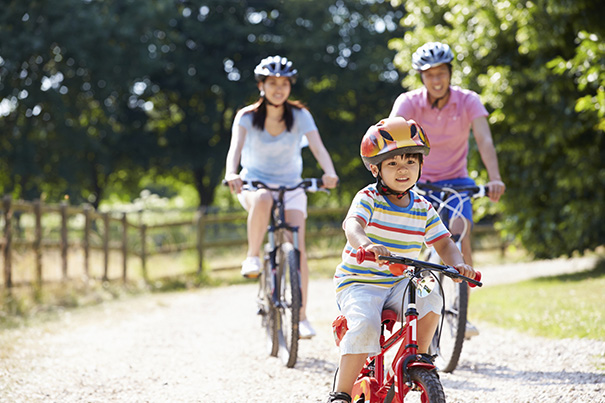
Toddler Bike Safety and Baby Bike Seat Safety
Most parents vividly recall their own attempts to learn to ride a bike when they decide to teach their children the same skill. Despite some spills and grazed knees, the experience leads to years of personal enjoyment and family fun. When your child becomes a peddler – whether on a three-wheeler or a two-wheeler – offer lots of encouragement. And remember, bike riding is a complicated skill that takes some time to master.
Along for the Ride: Seats, Spokes and Helmets
Ready to Ride
Where to Ride
Big Kid's Bike
Along for the Ride: Seats, Spokes and Helmets
Before your child is ready to ride on his own, you may want to bring him along as a passenger on your bike. Just wait until he's at least 1-year-old. By this age, he's better able to sit without support, and his neck will be strong enough to support a lightweight helmet. Keep in mind that even with the sturdiest bike and best-fitting helmet, a child is at risk of injury if you lose control or if you are struck by another vehicle.
Doing your best for your sightseer involves:
1. Using a rear-mounted seat
that is securely attached over the rear wheel. It should have spoke guards or straps to prevent little feet and hands from getting caught in the wheel. The seat should have a high back and a sturdy shoulder harness capable of supporting your child's weight even if he dozes off. Some parents choose to transport their young children in a covered, often canvas or durable plastic trailer. This metal trailer attaches to the rear drop-off of the adult bicycle's back wheel and is stable and strong. The wheels of the trailer are widely spaced so tipping over is unlikely. Your child is belted into the seat as well. The only downside is the cost, which at £100 or more, is expensive.
2. Using a lightweight infant or toddler helmet
on your small passenger to prevent or minimise head injury in case of an accident. Bicycle shops have a better selection of appropriate helmets than toy shops, so go there first. Bike shop staff should be able to advise on proper fit and adjustment, so be sure to ask for their help. Helmets that have been approved for safety carry the BSI kitemark from the British Standards Institution.
3. Strapping your child into the bike seat
and securing all the buckles each time you ride together.
Ready to Ride
By the time your child is running, climbing, jumping and kicking a ball, she's ready for a tricycle. That's because she'll be able to pedal. For most children, readiness comes between two and four years old. When they get to this stage, kids move fast, which increases the risk of falls. Make sure that your child is wearing an approved helmet that fits securely and comfortably.
Where to Ride
Allow your child to ride only in a safe place, such as a local park that isn't too congested. Make sure you always stay close by so you can supervise.
It's not a good idea to allow a toddler on a three-wheeler to ride in the road. Even with supervision, this is a bad idea: She'll think it's safe because you're there.
It may be obvious, but it's worth stating: Riding a bike near a swimming pool or near cars is not safe. A child on a tricycle sits low to the ground and may not be seen by a motorist who is backing out of a driveway, for example.
Insist that your child wear her helmet every time she rides, even if only in your driveway.
Big Kid's Bike
Most children can safely begin to ride a two-wheeler with stabilisers wheels when they are 4- to 5-years-old. In general, kids don't have the balance or muscle coordination to ride a bike without stabilisers until they are 5 or 6-years old, and sometimes older.
Here's how to tell if a bike is the right size for your child: Have him sit on the seat with his hands on the handlebars. The balls of his feet should be on the ground.
Be a good role model for your child by practising what you preach: Wear a helmet each time you go for a spin, alone or with company.
Read more about Toddler
Related Articles
Join Pampers Club and get:

